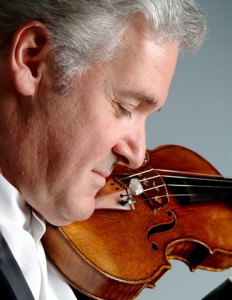 |
The folk dance of any region reflects its people, their culture and their traditions. Using the folk dance and all its elements including the traditional steps, music and costumes and arranging this for the stage, can provide an exhilarating and vibrant performance. An outstanding example of this can be found in the Georgian National Dance Company Sukhishvili.
The Georgian National Dance Company Sukhishvili was founded in 1945 by IIiko Sukhishvili and Nino Ramishvili, who not only have helped preserve the folklore of their country but have also produced a remarkable ensemble, the richness and beauty of the culture being effectively conveyed through dance and music. What makes the work of this company especially engaging, stimulating and exciting to audiences is the presentation, the way the traditional folk and dance elements are performed by highly trained dancers and musicians.
In the early years, the founders of this remarkable company spent a significant amount of time researching, collecting and documenting the authentic dance material, music, and the costumes which were specific to the various regions in Georgia. This material provided a basic foundation for the choreography and helps continue to reflect the true character of the people. When choreographing works for the stage it is important to use the material in a way that maintains the flavour and authenticity and give the audience a sense of beauty and grace which reflects the dance's important origins.
The republics of Georgia, Armenia and Azerbaijan form part of the Caucasus region, between the Black Sea and the Caspian Sea, and share borders with Turkey and Iran. Located between Europe, the Middle East and Western Asia, they were part of the important Silk Road. Over the years, traders and travellers provided the opportunity for both Eastern and Western cultures to learn much from one another and this influenced the arts significantly.
There are certain dances in the repertoire that show very clearly the link between dance and culture, the folk and their land. These dances show a special character which makes them uniquely Georgian. The Cherouli are dances that depict a sense of competition with elements of horses galloping suggested in their movements. Agility, swift and daring horsemanship, war–like athletic contests and courage are considered the supreme virtues.
The Khorumi is a ritual dance referring back in history to the wars between the Turks and the Monguls, battles fought in the mountains to retain Georgia's independence. The dance shows the men, tense and alert, as they listen for the enemy; they build a human pyramid to scan the horizon and then form a circle as a barrier against the enemy. The fighting scene then portrays brilliant, precise knife–throwing and sword fighting with amazing leaps and turns.
Georgia's mountains provide a home for the eagle, which in early times was worshipped by the Georgian Cossacks. The Lezghinka imitates the eagle circling its prey. Using tiny steps and moving swiftly in a circle, the dancers seem to hover in space, before flinging their daggers into the ground, and then dropping to their knees to retrieve them… as an eagle dives to seize its prey.
The Lekouri is a lyrical dance performed by both men and women. The woman is invited by the man to dance; she accepts but during the dance keeps her eyes lowered while the man remains slightly behind but never touching his partner. The fast changing patterns of this dance are driven by the sudden turning of the women. It is said the dance represents the continual travelling up and down mountain paths.
Knowing the background of these dances helps us to appreciate the movements and patterns linking them with folklore. An important element when watching folkloric dance performances is the correct style which highlights the difference between regions. The Georgian National Dance Company Sukhishvilli provides the entire package, the show is produced to deliver a total theatrical experience, the dancers are enhanced by wonderful costumes, special lighting and live music. Visually the performance is breathtaking. The beautiful women are attired in long costumes, their arms in tight fitting sleeves allowing us to appreciate the graceful arm movements; the costumes enhance their elegance and their gliding and effortless movements. The men wearing high leather boots over slim fitting trousers and military style tunics fitted at the waist, with multiple knives slotted under their belts create a sense of strength and pride. The tight and supple boots allow the men to dance on their toes, a special characteristic of Georgian dance.
The significance of such a company is that it not only provides us with a spectacular performance but it has also kept the Georgian culture alive. Without the dedication of its founders and the work of the ensemble much of this folklore would have disappeared. The emphasis on professionalism produces a well trained and rehearsed ensemble. This company has travelled to many parts of the world and has received well deserved praise and accolades for its work. We can be sure that the Georgian National Dance Company will continue to enchant audiences for many years to come.
本網站內一切內容之版權均屬國際演藝評論家協會(香港分會)及原作者所有,未經本會及/或原作者書面同意,不得轉載。









